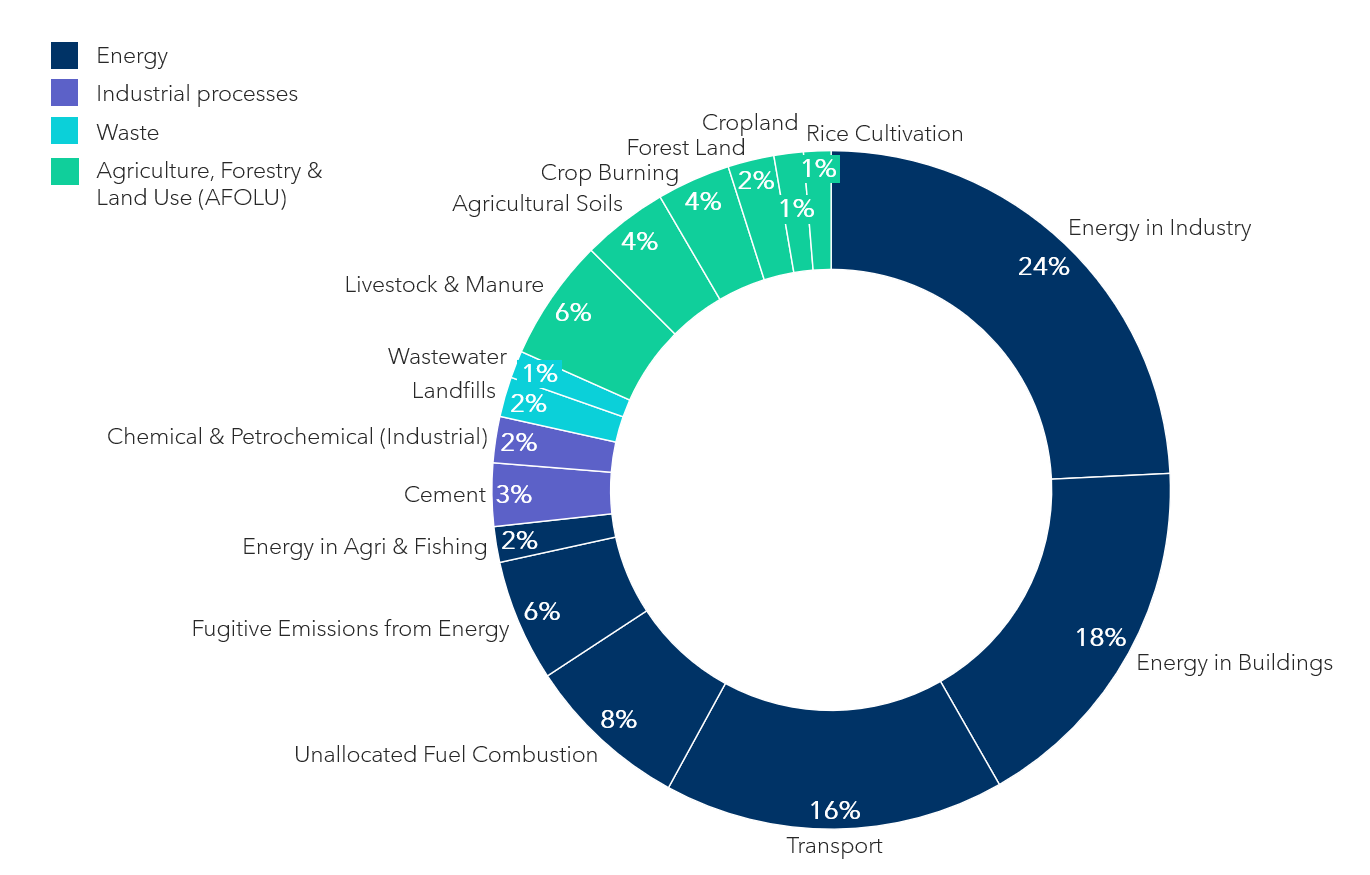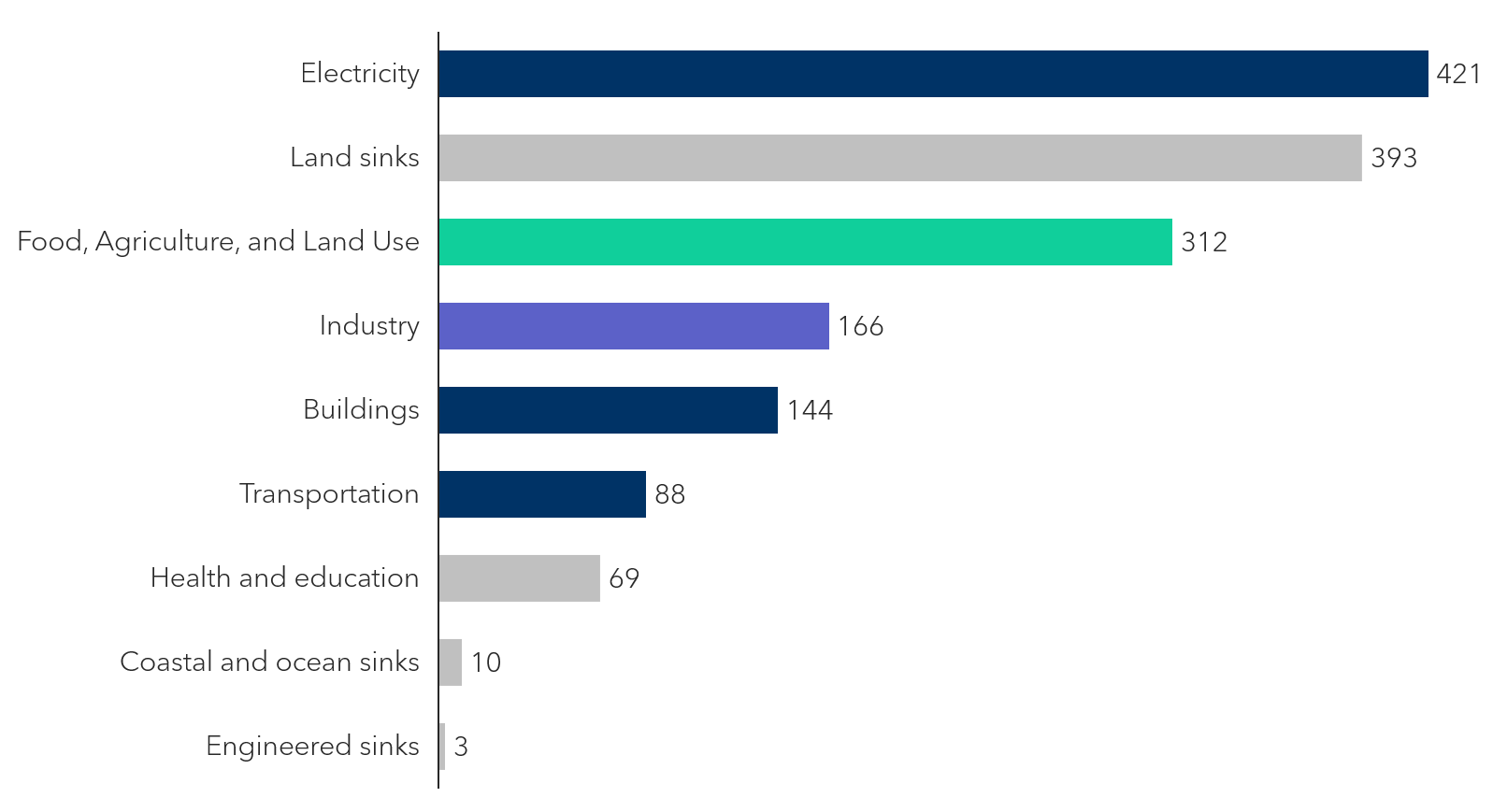Copyright © 2023 Telesto Strategy LLC, All rights reserved.
Climate Tech has emerged as the topic du jour for sustainability-minded investors, but clarity around what it is and what it does is often lacking. In this article, we demystify and unpack Climate Tech and what it holds for the future.
The signs are clear that global warming is accelerating, but so are the world’s collective efforts to slow its progression. These efforts include protecting nature-based climate solutions like natural carbon sinks, advancing regulatory measures to incentivize responsible environmental stewardship, and developing more environmentally friendly technologies. While technological advancements have often been on the side of increasing human-driven climate change since the Industrial Revolution, they may also hold the key to averting disaster. But which technologies hold the greatest promise for being a part of the solution to climate change?
Green, clean, or climate tech?
Much like the technologies themselves, the terminology for sustainability technological solutions is evolving quickly. First came “green tech,” which appeared in the 1990s as an umbrella term for any technology that is environmentally friendly or sustainable. “Clean tech” gained traction in the 2000s and is still used to refer broadly to technologies which improve environmental performance – including water or energy efficiency, resource conservation, and waste reduction. Partially as a rebrand following the bust of the clean tech boom and partially to gain yet more specificity, “climate tech” has emerged as the topic du jour for sustainability-minded investors.
This latest iteration refers to technologies which aim to mitigate and adapt to the effects of climate change. As the name suggests, climate tech encompasses technologies which interact with the drivers or consequences of climate change – usually focusing on greenhouse gas (GHG) emissions.
Within climate tech, there are two main categories of technologies:
- Climate tech for mitigation refers to technologies which seek to slow global warming by reducing the quantity of GHGs in the atmosphere. This includes:
-
- Abatement, or reducing the amount of GHGs emitted globally each year through measures like improving energy efficiency or using cleaner forms of power (e.g., LED lighting, solar power); and
- Sequestration, or capturing and storing atmospheric GHGs that have already been emitted, effectively extracting it from the atmosphere (e.g., carbon capture and storage, direct air capture).
-
- Climate tech for adaptation refers to technologies which seek to improve the ability of governments, businesses, and communities to anticipate and respond to the adverse effects of climate change. Examples include drought-resistant crops, early warning systems for natural disasters, and sea walls to combat rising sea levels.
Unpacking Climate Tech for Mitigation
According to the World Meteorological Organization, we are now likely (~66% chance) to exceed a 1.5 degree Celsius global temperature increase from pre-industrial levels by 2027. This threshold, set by scientists, the United Nations’ Intergovernmental Panel on Climate Change, and world leaders, represents a tipping point for the increased likelihood of climate-related disasters, including flooding, drought, wildfires, and food shortages.
Although human-induced warming has already reached 1.2°C from past emissions and their knock-on effects, limiting warming to 1.5°C is still possible – if the world can dramatically curb emissions to reach net zero by 2050. However, the road to meeting such ambitious emissions reduction targets is far from straightforward: GHGs are baked into nearly every aspect of the global economy and our day-to-day lives. The energy that powers our industries, buildings, and transportation comprises nearly three-quarters of the roughly 50 billion tons of GHGs the world emits every year.
Global share of GHG emissions by sector and sub-sector, 2016 (% of total)

SOURCE: Our World in Data
We cannot simply stop using electricity, harvesting food, or generating waste overnight. Enter climate tech. Spanning 40+ industries and solutions, climate change mitigation technologies include both alternatives to traditional GHG producing technologies such as renewable energy sources as well as those which reduce GHGs already present in the atmosphere (e.g. carbon capture and storage). While many of these technologies are still in their infancy, the IEA estimates that roughly 60% of the reductions in CO2 emissions through 2030 will come from mature technologies.
Project Drawdown, a research organization which quantifies the emissions impact of climate change solutions, presents an optimistic vision of climate technology’s role in mitigating global warming. According to their pathway to a 1.5°C increase, the world can significantly curb emissions using climate mitigation technologies which are currently available, growing in scale, and financially viable.
The following illustrates how many gigatons of GHGs can be abated or sequestered using available technologies, supplemented with non-technological solutions like carbon sinks and education.
Projected impact of selected climate tech mitigation solutions, 2020-2050 (cumulative gigatons of CO2e reduced or sequestered)

SOURCE: ProjectDrawdown
Many of the most impactful mitigation technologies which address emissions from electricity generation (e.g., wind, solar, and geothermal energy) are scaling rapidly as they continue to become more cost-effective alternatives to fossil fuels. Likewise, advancements in low-carbon building materials, electric vehicles, and manufacturing practices are reducing emissions from industry, buildings, and transportation.
Unpacking Climate Tech for Adaptation
Limiting warming to 1.5°C will limit risks of increases in heavy precipitation events, droughts, and other climate-related hazards. However, the 1.5°C increase will still leave more than 200 million people exposed to unprecedented heat, and another 500 million to long-term sea level rise.
Research has shown that at least 80% of the world’s land area and 85% of the global population has already experienced weather events made worse by climate change. Climate-related weather disasters caused over $165 billion in damages in the United States in 2022 and have been linked to the ongoing humanitarian crisis in the Horn of Africa.
Both preventing additional harm and responding to the ongoing effects of climate change are integral to a comprehensive global response which addresses the needs of present and future generations. And here again, climate tech can help.
Climate change adaptation technologies can help us better anticipate and respond to the extreme weather, crop failures, natural disasters, and other effects of the climate crisis. Tools like Google FloodHub, Firecast, and Pano AI all make use of emerging technologies to provide real-time monitoring to help governments better respond to natural disasters.
What's next for Climate Tech?
As governments and private sector players continue to recognize the economic potential and environmental necessity of investing in climate tech, we can expect further breakthroughs in designing and scaling innovative solutions. Emerging non-climate technologies like blockchain and Artificial Intelligence also have the potential to boost the efficacy of climate technologies on both the mitigation and adaptation sides. We will explore potential climate applications of emerging technologies in a future article. In the meantime, Telesto is available to help you map out how to future-proof your business by staying ahead of the curve on sustainability.

